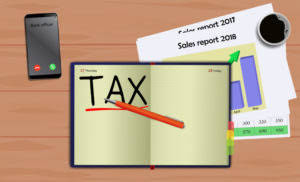
Note that the word ‘purchases’ relates to the specific cost of items that you buy with the intention of selling on to customers. Next up, we’re going to tackle the penultimate step in the accounting cycle – the trial balance. However, we know that Emily is one of Adam’s credit suppliers and they have an agreement that allows fixed assets him 14 days from the date of invoice to pay for the goods he buys. In part four we discussed the sales, and demonstrated that the only real difference between a cash and credit sale is the length of time it takes for the receipt to end up in the bank. Control accounts are summary accounts and considered as a quick glance when you want to know about your sales or purchase performance.
- Furthermore, each type of account may have a number of transactions.
- So, the control account equalizes all subsidiary accounts, and it helps simplify and organize general ledger account.
- The source documents are used to enter details into the book of prime entry which, for payment transactions, is the cash book.
- As we can analyze, that carried forward balance of the control account is equal to the closing balance in the general ledger, totaling to $180,000.
- To ensure accuracy of the ending balance for accounts receivables, we obtain accumulated figures for the credit sales, cash received, sales return, and discount allowed to construct the control account.
- If there is a difference between the control account balance and subsidiary ledger you will need to investigate the reason.
Questions to Ask an Accountant
Using them effectively gives you better control over your finances, and you can make informed decisions to drive your business forward. The next main type of accounts payable transaction is the payment of cash to the supplier for the outstanding invoice. The nominal ledger is where all of the individual ledger accounts are gathered and is also sometimes called the ‘main ledger’ or the ‘general ledger’. It serves the purpose of the reconciliation that increases our confidence in the ending balance of accounts receivables.
The Control Account – A Simple Guide for Small Businesses

This is a credit transaction and once Adam receives the invoice he needs to record the expense and that he owes Emily £65.32 – the accounts equivalent of an IOU. They bring order to your accounting system, helping you maintain a clear view of your income and expenses. In this article, we’ll explain what they are, why they’re crucial for small businesses, and how you can easily use them to take charge of your financial health.
- They bring order to your accounting system, helping you maintain a clear view of your income and expenses.
- It’s easy to track your expenses from anywhere with online invoicing software like Debitoor.
- Entries in the control accounts such as “total sales”, “total purchases” as well as “bank” come from the relevant accounting journals.
- The purchase ledger is part of the accounting department’s database; it is not maintained by the purchasing department.
- She has over 2 years of experience in writing about accounting, finance, and business.
Accounting Multiple Choice Questions
Summarising subsidiary account balances and control accounts helps businesses maintain organised and accurate financial records. This practice simplifies the review process and enhances the overall accuracy of financial statements, making control accounts an invaluable tool in modern accounting. Firstly, in the subsidiary ledger, you will maintain separate records of each customer and supplier (cash outflows and cash inflows). By doing this, you can track the record of every customer; their opening and ending balances as well as how much you owe or have to pay. Secondly, then you will make a control account in which you put the summary amount- total sales with its invoice price, total collections, or total payout. Thus, it helps you to track the overall performance of your business.
To ensure accuracy of the ending balance for accounts receivables, we obtain accumulated figures for the credit sales, cash received, sales return, and discount allowed to construct the control account. Simply put, as you know in large organizations there are numbers of customers as well as suppliers. So, if you record each transaction (account payable and account receivable) in the general ledger, it will become too difficult to manage your records easily. Thus, in order to keep a proper record, you have to maintain control accounts and subsidiary accounts.

Also, if suppliers grant a credit back to the business for such items as returned goods or items damaged in transit, then you also record credit memos issued by suppliers in the purchase ledger. A credit memo may also be issued for a volume discount, though this credit may apply to a number of purchases in aggregate, and so cannot be traced back to an individual purchase transaction. Check purchase ledger control account out the format of this control account below and try to perceive the similarities with individual trade payables account (creditors account). It’s important to note that the control account balance does not impact the figures in the trial balance and financial statement.

- The balances in your control account directly impact your balance sheet.
- Using a good accounting software package is the easiest way to view and amend control accounts.
- The subsidiary ledger is a listing of personal accounts, one for each supplier.
- We’re going to finish by highlighting a couple of useful differences between the accounts.
- Summarising subsidiary account balances and control accounts helps businesses maintain organised and accurate financial records.
- Again, this name is used because it reflects the total of the individual purchases on credit (purchases from creditors), as reflected in the purchases ledger.
The purchase ledger is also known as the purchase subledger or purchase subaccount. Total purchase returns from the Return Outwards Day book (Purchase returns journal). Incidentally, ‘cash’ and ‘bank’ tend to be the same thing; the balance in the business current account. Suppose that on December 31, 2020, the total debtors in the general ledger of ABC manufacturing company valued at $180,000 as break-up is shown. On 1 March 2024, there will be a debit balance of $450; therefore, there will need to be a balance c/d on the credit side on 29 February 2024.
Therefore he’ll need to look at Emily’s individual account in the purchase ledger, which will show him the details of all the transactions that have taken place between them. Purchase ledger control account is a part of a balance sheet and a short-term liability. Control accounts are an element of the double-entry bookkeeping method and are used to check the totals found in a company’s balance sheet.
